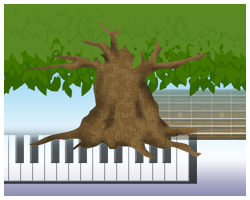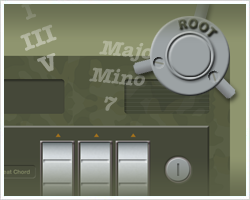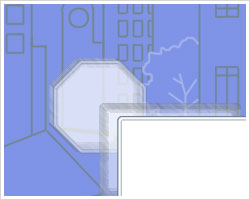The most basic chords are called triads, and they contain three different notes played at the same time. These notes are called chord tones and are arranged as follows:
| root: | the main note of the triad |
| third: | a major or minor third interval above the root |
| fifth: | a perfect fifth, diminished fifth, or augmented fifth above the root |
There are four basic types (or "qualities") of triads: major, minor, diminished and augmented. Triads with major or minor quality are by far the most common triads found in popular music. Diminished and augmented triads appear often in jazz and classical settings, and also have specialized uses in popular music. The four basic triad qualities are built by stacking major third and minor third intervals in the following manner:
- Major: Major 3rd + Minor 3rd (ex. C, E, G)
- Minor: Minor 3rd + Major 3rd (ex. C, Eb, G)
- Diminished: Minor 3rd + Minor 3rd (ex. C, Eb, Gb)
- Augmented: Major 3rd + Major 3rd (ex. C, E, G#)
Use the demo app below to try out these patterns and see how chords are constructed for each of the four different triad qualities. First select a root tone, then press the button for the triad you want to hear.
In order to work out the chords to a song by ear, you first need to be able to identify the quality of the chord - that is, whether it is major, minor, augmented or diminished. To begin, learn to sing and identify the arpeggio of the triad. This is made up of the individual chord tones played one after another in sequence.
The beginner levels of Tone Trees and Chord Locks will give you extensive practice in identifying triad quality and distinguishing the individual chord tones of the common triads, especially major and minor triads. With Tone Trees, you will also learn to visualize the shapes of different triads on piano or guitar.



